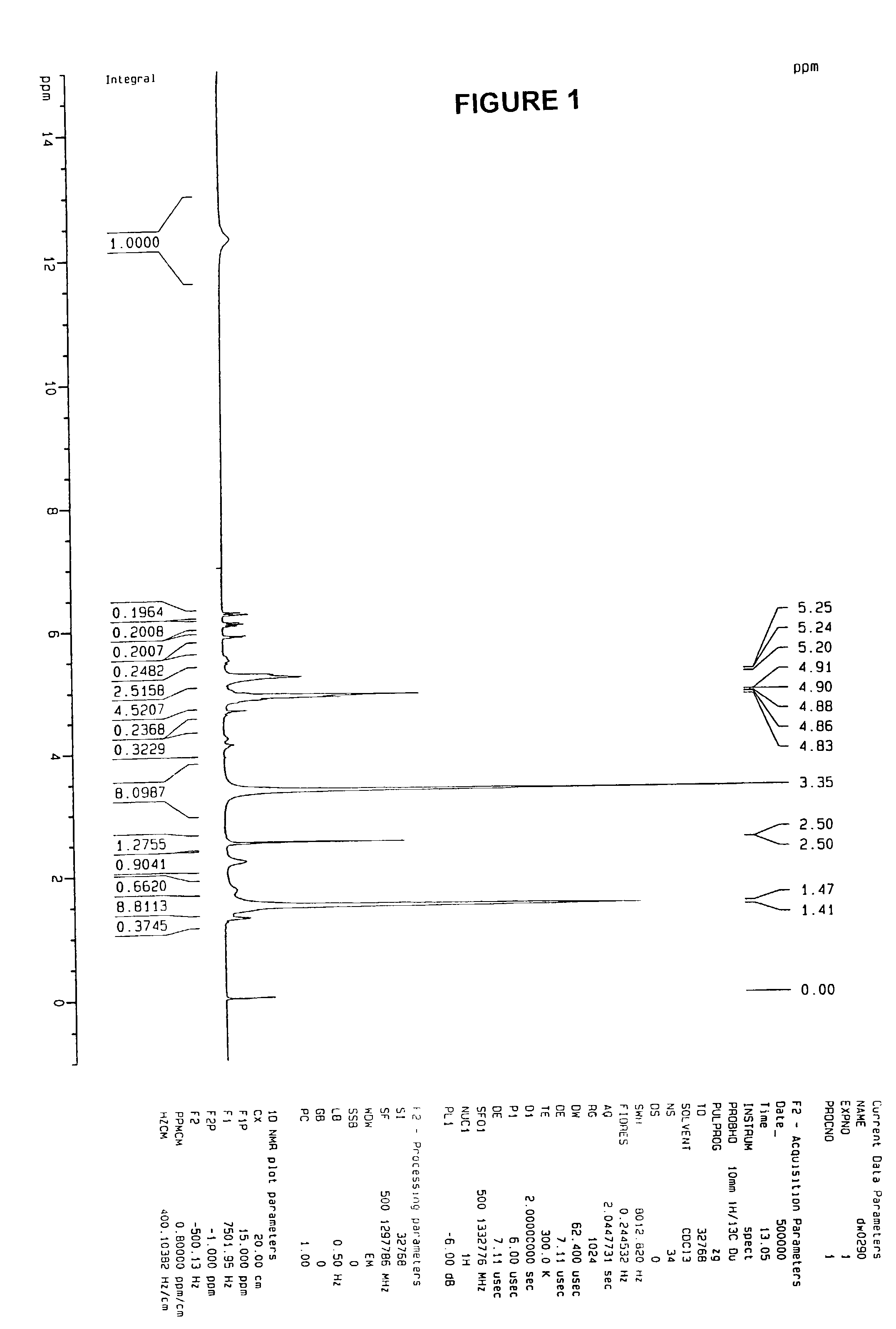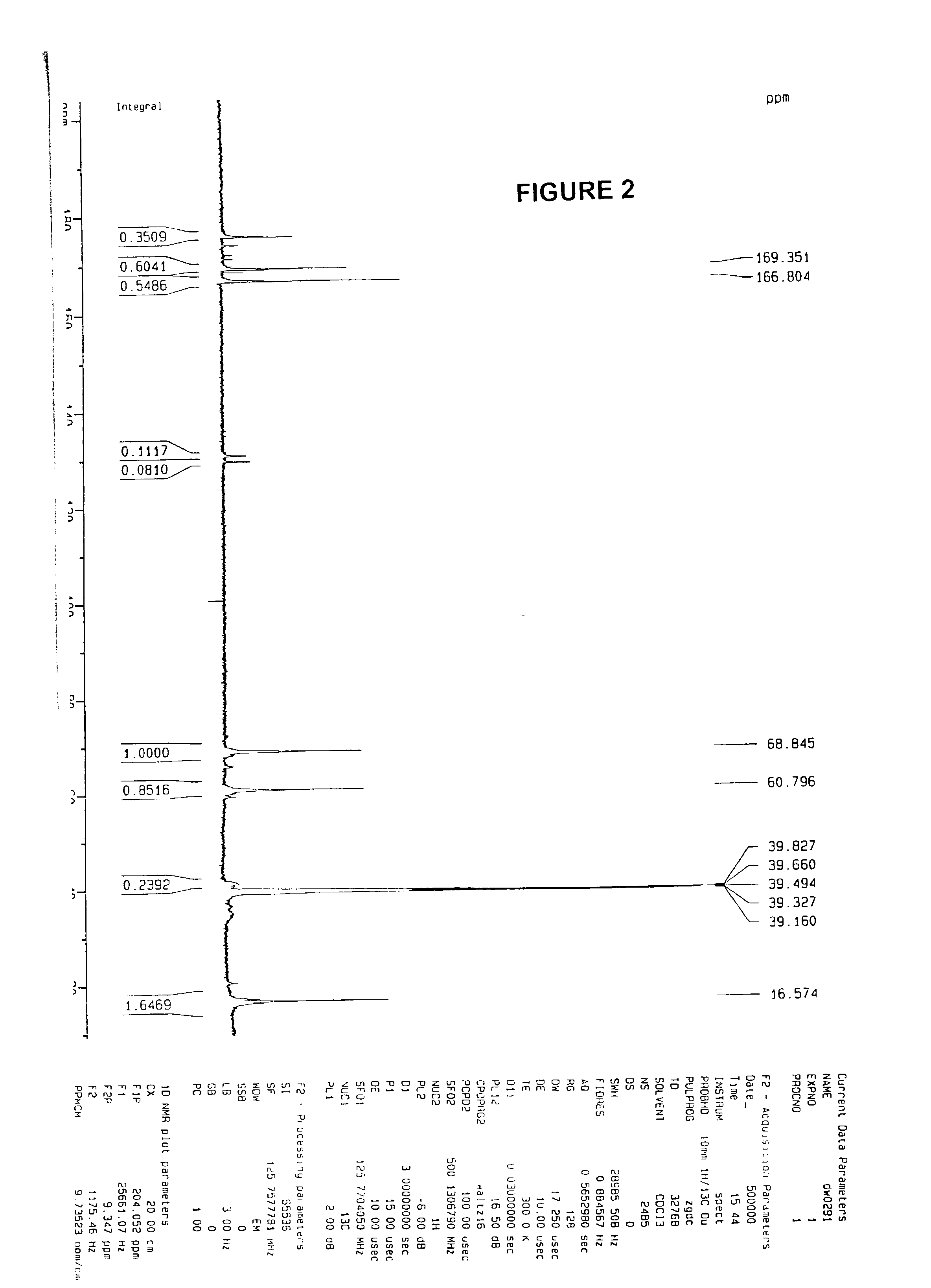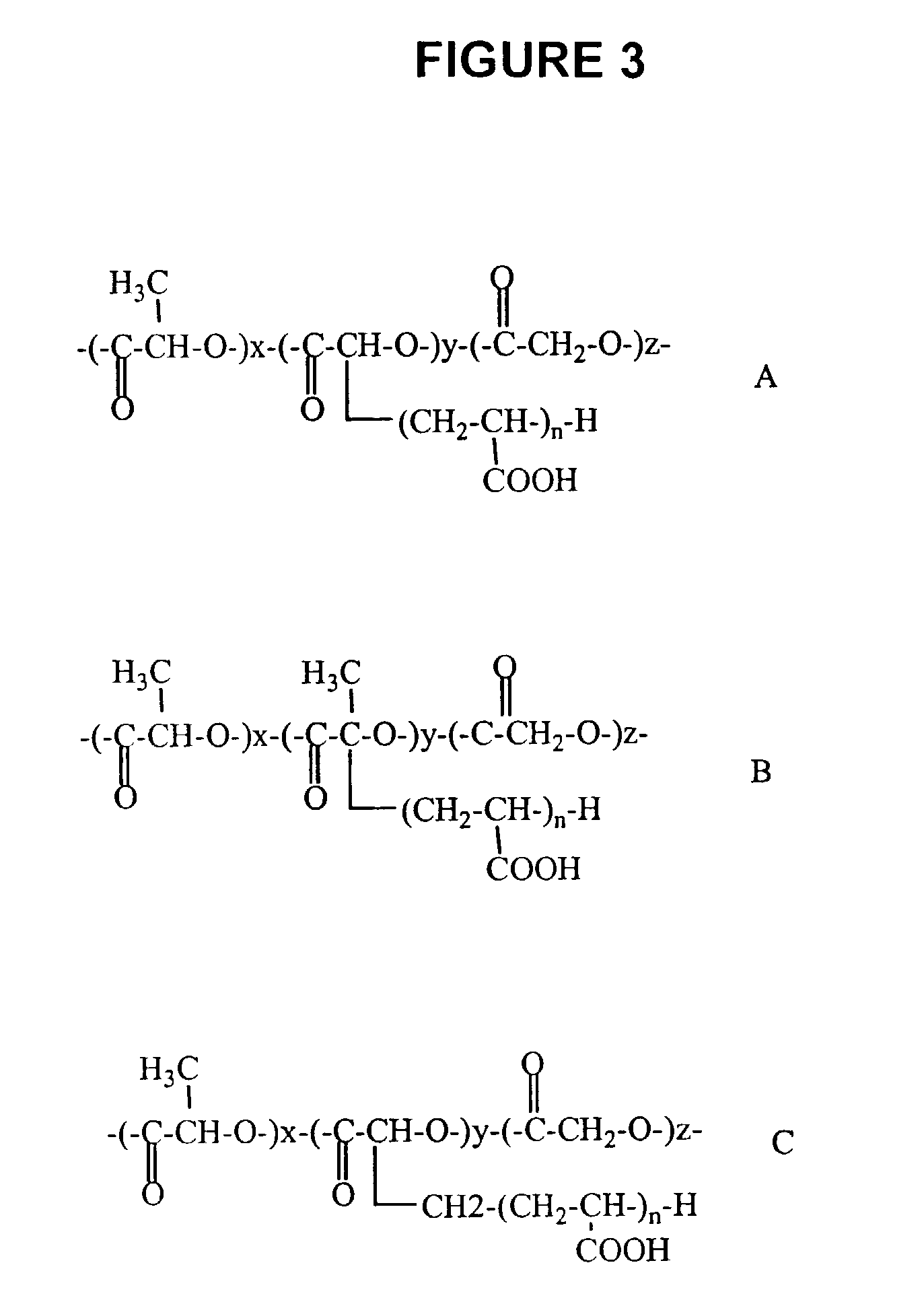Methods of making functional biodegradable polymers
a biodegradable polymer and functional technology, applied in the field of methods of making functional biodegradable materials, can solve the problem that the application of synthetic biodegradable polymers is greatly restricted by functional groups
- Summary
- Abstract
- Description
- Claims
- Application Information
AI Technical Summary
Benefits of technology
Problems solved by technology
Method used
Image
Examples
example 1
PLGA / AA Systems
[0053]Two sets of experiments were done to prove firstly that PLGA is soluble in acrylic acid. (1) 1 g of PLGA from Alkermes, Cambridge, Mass. (Medisorb® PLGA DL 5050 1A) was mixed with 1 g acrylic acid from Aldrich Chemical Company of Milwaukee, Wis., (catalog no. 14723-0, vacuum distilled to remove inhibitors) and stirred for 40 minutes, the final mixture was homogeneous; (2) 1 g PLGA was dissolved in 1 g acetone. Then, 40 ml of acrylic acid was added to the solution, and resulted in a homogeneous and clear solution. The whole solution was poured into 800 mL water and white precipitation was observed.
[0054]As a test, 5.7 g PLGA was dissolved in 5.7 g acrylic acid with stirring. After the dissolution, 0.014 g 2,2′-azobisisobutyronitrile (AIBN) 98%, from Aldrich Chem. (catalog no. 44, 109-0, cas no. 78-67-1) was added into the solution, and the whole system was transferred into a 70° C. oil bath. After 5 minutes, there was a self-acceleration effect observed and the w...
example 2
Polycaprolactone in Acrylic Acid
[0057]This example illustrates that polycaprolactone is also soluble in acrylic acid, and hence it also may be functionalized by direct reaction in acrylic acid.
[0058]First, 1 g of polycaprolactone from Aldrich (catalog no. 44075-2, MW 10,000) was mixed with 5 g acrylic acid from Aldrich (catalog no. 14723-0). After 50 minutes of stirring, the mixture became a clear and homogeneous solution. The solution was then poured into 100 ml of water, and formed white precipitate.
[0059]As a second test, 2 g polycaprolactone was dissolved in 2 g chloroform, a known solvent for it. The solution was then poured into 30 mL of acrylic acid, resulting a clear solution. This solution was then poured into 800 mL water, and a white precipitate was observed, followed by phase separation of chloroform / water.
[0060]As a third test, 2 g polycaprolactone was stirred and mixed with 2 g acrylic acid. After 2 hours, a homogeneous mixture was formed.
example 3
PLGA in HEMA
[0061]This example is to show that PLGA is also soluble in another biocompatible and functional monomer, 2-hydroxylethyl methacrylate (HEMA). 1 g of PLGA (Medisorb® PLGA DL 5050 1A) was mixed with 5 g HEMA from Aldrich (catalog no. 12863-5) with stirring. It was found that PLGA was easily dissolved. Then, 4 g more PLGA was added to the solution, and it was also easily dissolved. To the above formed solution, 0.01 g AIBN was added and dissolved. The new solution was transferred to a 65–75° C. oil bath. After 5 minutes, the mixture became milky and solidified, i.e., the solution reacted.
[0062]Many variations of this method will be apparent to those who are skilled in the art, and are contemplated to be within the scope of the present The biodegradable polymers, for example, can be used in mixtures of several polymers, and the monomer medium can comprise more than one type of monomer. Furthermore, the use of a solvent as mentioned above, other than vinyl monomer, is conside...
PUM
| Property | Measurement | Unit |
|---|---|---|
| temperature | aaaaa | aaaaa |
| weight percent | aaaaa | aaaaa |
| particle size | aaaaa | aaaaa |
Abstract
Description
Claims
Application Information
 Login to View More
Login to View More - R&D
- Intellectual Property
- Life Sciences
- Materials
- Tech Scout
- Unparalleled Data Quality
- Higher Quality Content
- 60% Fewer Hallucinations
Browse by: Latest US Patents, China's latest patents, Technical Efficacy Thesaurus, Application Domain, Technology Topic, Popular Technical Reports.
© 2025 PatSnap. All rights reserved.Legal|Privacy policy|Modern Slavery Act Transparency Statement|Sitemap|About US| Contact US: help@patsnap.com



